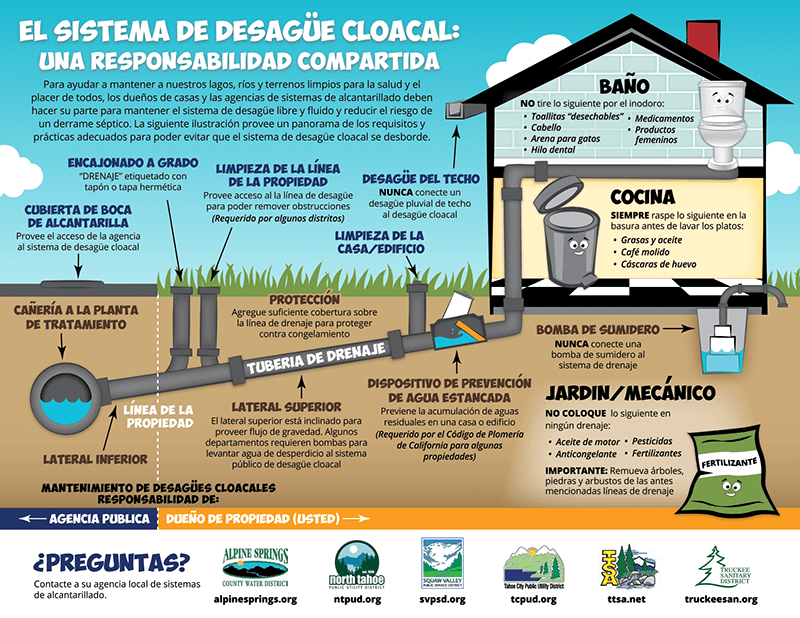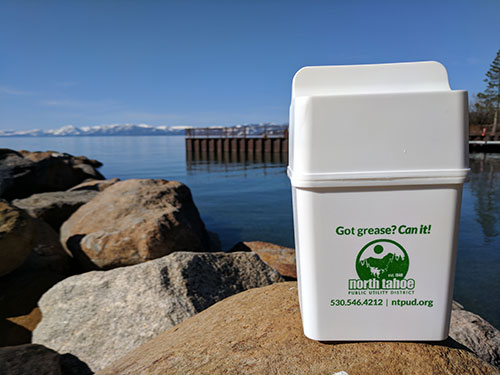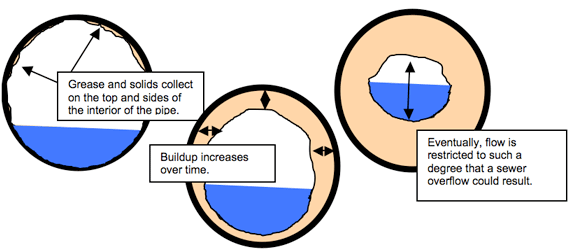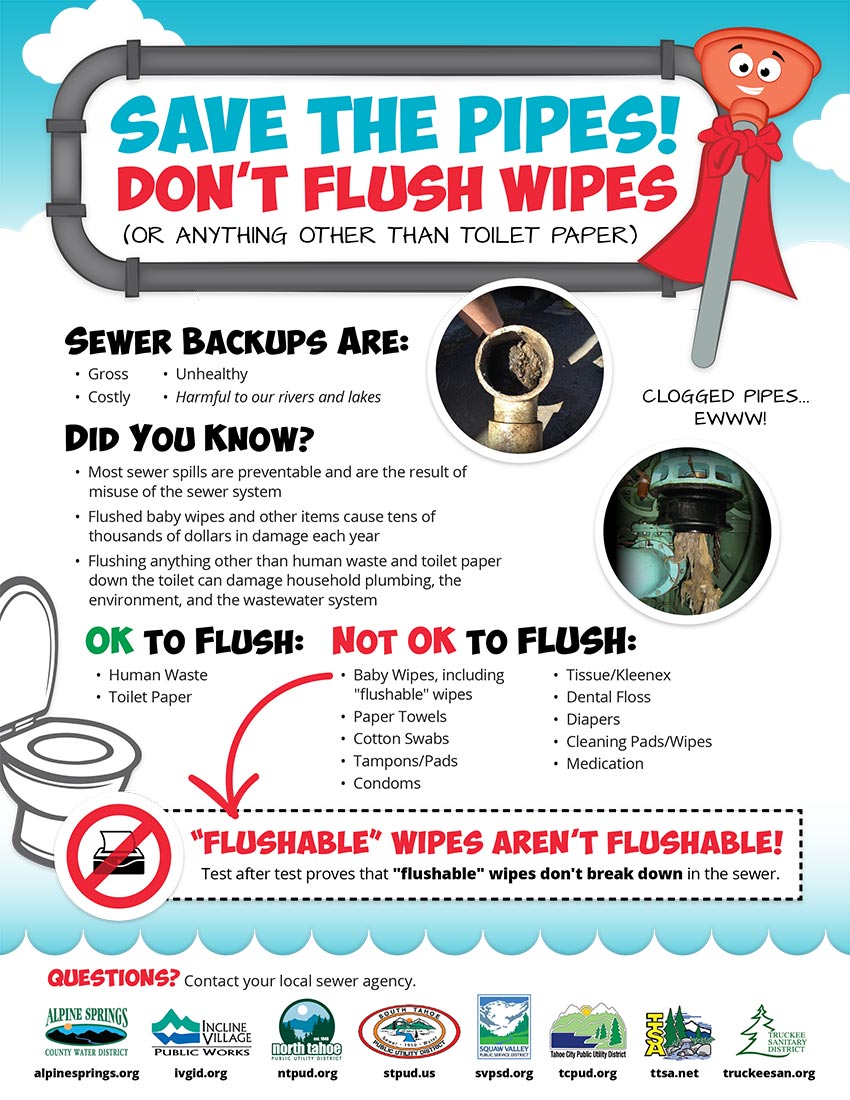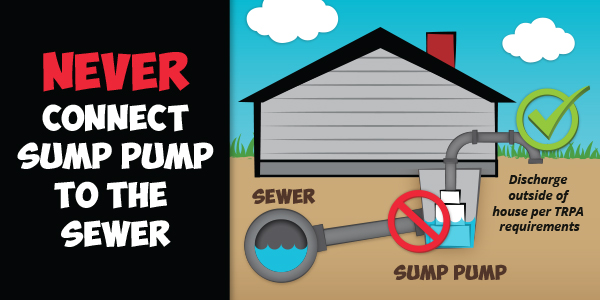Sewer System: A Shared Responsibility
To help keep Lake Tahoe and the environment clean for the health and enjoyment of all, both homeowners and sewer agencies must do their part to keep the sewer system free and flowing and reduce the risk of a sewer spill. The drawing below provides an overview of the requirements and best practices of a sewer system in order to keep it from overflowing.
The Sewer System: A Shared Responsibility (PDF)
Pick up your FREE “Can the Grease!” container at the District’s Administrative offices, located at 875 National Avenue, Tahoe Vista, California. They come with “turkey bag” liners which allows you to pour hot grease directly into the container. We’ll gladly send you more liners anytime, stop by or give us a call or email us. The container also fits in the door of your refrigerator.
Fats, Oils, and Grease (FOG) Prevention
Fats, Oils and Grease (FOG) are one of the main causes of sewer clogs and overflows within our District. Cooking byproducts from thousands of homes and restaurants in our area get washed down kitchen drains. The fats, oils, and grease build up in sewer pipes over time and create blockages. Those blockages can cause backups and overflows inside homes or onto public streets and into stream or lake environments.
Garbage disposals, hot water, and liquid soap do not grind up and wash away the byproducts. The “hot soapy water” only serves to carry byproducts a few feet down your drain – usually somewhere between your foundation and property line. Once the water starts to cool, fats, oils, and grease also cool and collect on the top and sides of the pipe.
Here are steps you can take to help prevent a clog:
- Keep dairy products, fats, grease, or greasy foods out of the sink and the garbage disposal. Garbage disposals only break up food into smaller pieces that easily stick to the grease that collects on the inside of your sewer pipe.
- Pour cooking fats, oils, and grease in a container with a tight-sealing lid and dispose of it in a trash receptacle on your designated trash day. The District has FREE containers with disposable liners available at the District Administrative Offices!
- For greasy pans that need to be soaked, first pour off the grease into a container as mentioned above, then dry-wipe the pan with a paper towel or napkin before placing in the sink to soak.
Your Toilet is NOT a Trash Can!
The District has 4 main pump stations that transport the sewage out of the basin to the Tahoe Truckee Sanitation Agency. In recent years, these pump stations have been experiencing clogs in the pumps. The material clogging the pumps is cloth like, has a high tear strength, and is not disintegrating, dissolving, or decomposing in the collection system. DO NOT use “Your Toilet As A Trash Can! Flushable does not mean dissolvable! Clogging of these pumps can cause a sewer spill and because most of these pump stations are at or near Lake level, these could cause sewage overflows into Lake Tahoe.
Remember: Wipes clog pipes!
Download our flyer for more info (PDF)
Más información en español (PDF)
No Sump Pumps to the Sewer
As this wet Winter turns into a wet Spring, many homes and businesses are experiencing flooding issues where they haven’t before and are implementing various methods, including new sump pumps, to drain this nuisance water. Collected storm water runoff and groundwater are not permitted to be discharged into the sewer system. This applies to water pumped through a sump pump or that runs into the system purely by gravity. The region’s sewer system was not designed to handle this runoff. This is true for the District’s collection and transport system, comprised of pipes and pumps, but also the end treatment process at Tahoe Truckee Sanitation Agency. Sending clean stormwater or groundwater through sewer system overwhelms its ability to perform its primary duty of handling the sewer flows.


